Solar radiation – sunlight – is a powerful force. UV rays break down and damage cells, which is why we all wear (or should wear) sunscreen when we spend time outdoors. Public health rarely concerns itself with the sanitation of common outdoor surfaces like water fountains, playground equipment, or park benches. It stands to reason, then, that these present minimal risk of the transmission of diseases like COVID-19.
This begs the question: can the sun be used to sanitize face masks? After all, you use your face mask constantly, so it’s dirty and likely contaminated in many ways. Laundering a mask damages it over time, just as it does any set of clothing, so if you can save some wear and tear, isn’t it a good idea to do so?
How the Sun Works
Okay, we’re not actually going into a science lesson here. All you need to know is that the sun emits radiation in a wide range of wavelengths. A lot of these wavelengths are visible light, which is how we can see and how plants grow. Some of it is infrared radiation, which is invisible to us but visible to some creatures and cameras. It’s what we experience as warmth from the sun.
On the other end of the spectrum is ultraviolet radiation. UV rays come in three forms: UV-A, UV-B, and UV-C.
The classification of UV radiation depends on its wavelength. The larger the wavelength, the closer the radiation is to visible light. UV-A is the longest, while UV-C is the shortest.
It’s also important to know that the shorter the wavelength, the more damaging the radiation is. Radiation even shorter than UV-C includes things like X-rays and gamma radiation, which can be extremely damaging to living things. It’s why x-rays are only used in specific medical circumstances and in short bursts; longer bursts can cause cancer, radiation sickness, and death.
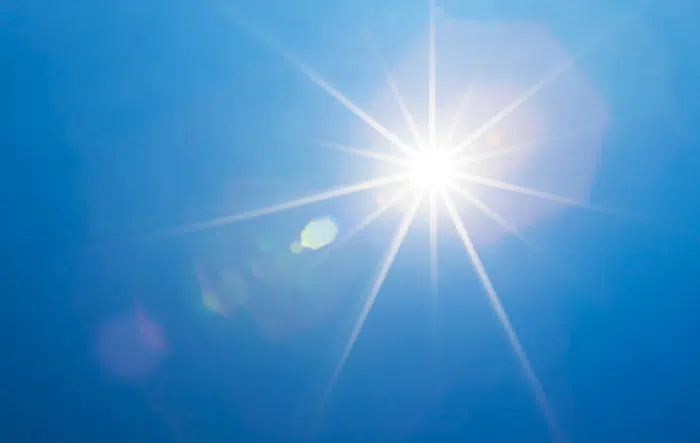
UV-A radiation is the most dangerous, not because it’s the most damaging – quite the opposite. UV-A is the “safest” of the three ultraviolet radiation wavelengths. It’s the most dangerous because it’s the one that penetrates the atmosphere – specifically the ozone layer – the most easily. Thus, it’s the one that you’re most exposed to. All three forms of ultraviolet radiation can cause skin damage, sunburns, premature aging, cancer, and more.
UV-B mostly bounces off the ozone layer, but can penetrate in small amounts, especially at higher altitudes. It’s the common cause of “snow blindness” in mountain climbers, skiers, and other high-altitude enthusiasts.
UV-C is also known as “germicidal UV” because of its power in destroying microorganisms and sanitizing surfaces. It also pretty much entirely bounces off the ozone layer, which is good because if it made it through, life would not have been able to evolve on earth outside of the oceans.
Using UV-C to Sterilize
UV-C radiation is used to sterilize surfaces in some settings. The thing is, it’s not the sun doing it. The vast, vast majority of UV-C coming from the sun is reflected off of the atmosphere and never reaches the height of planes or mountaintops, let alone the ground at sea level.
UV-C radiation can be generated on earth and is, in fact, common. Welding torches and mercury lamps both generate it. It’s also specifically engineered in germicidal lamps, which are used as disinfectants for air and surfaces where chemical disinfectants are not viable. It’s commonly used to minimize the risk of spreading tuberculosis, for example.
The trouble here is that UV-C radiation can only sterilize a surface if that surface is directly exposed. UV-C doesn’t penetrate objects or surfaces well, including dirt and dust, as well as bodily fluids.
That means that while UV-C lamps could disinfect the air in a room from COVID-19, they won’t be able to disinfect anything they can’t touch.
You also need a specific UV-C generating source to sterilize. There are a lot of UV sterilizing boxes available on sites like Amazon, but they are almost entirely scams. UV-C is not easily generated and, when it is, it generates ozone because it hits air molecules and breaks them apart as well.
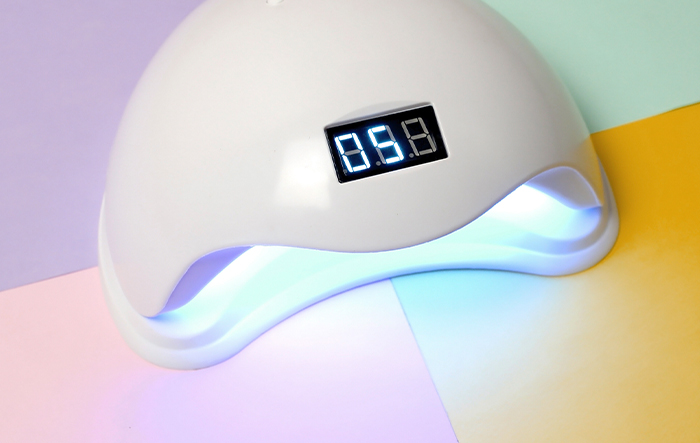
Just take a look at this page. These are professional-grade UV-C lamps, and they cost $1,000+. That $40 box with a blacklight in it on Amazon is absolutely not generating UV-C.
Can UV-C be used to sanitize against COVID-19? Probably not. Just take a look at what the CDC has to say:
“UVC radiation can only inactivate a virus if the virus is directly exposed to the radiation. Therefore, the inactivation of viruses on surfaces may not be effective due to blocking of the UV radiation by soil, such as dust, or other contaminants such as bodily fluids.”
“UVC radiation is commonly used inside air ducts to disinfect the air. This is the safest way to employ UVC radiation because direct UVC exposure to human skin or eyes may cause injuries, and installation of UVC within an air duct is less likely to cause exposure to skin and eyes.”
“There is some evidence that UVB radiation is effective at inactivating other SARS viruses (not SARS-CoV-2). However, it is less effective than UVC at doing so and is more hazardous to humans than UVC radiation because UVB radiation can penetrate deeper into the skin and eye. UVB is known to cause DNA damage and is a risk factor in developing skin cancer and cataracts.”
“UVA radiation is less hazardous than UVB radiation but is also significantly (approximately 1000 times) less effective than either UVB or UVC radiation at inactivating other SARS viruses. UVA is also implicated in skin aging and risk of skin cancer.”
So, while UV radiation can be used to sterilize surfaces, it’s dangerous to use outside of controlled conditions, and using it at any reasonable speed requires expensive lamps.
Using the Sun to Sterilize a Mask
Now let’s put this together. The original question was about whether or not you can use sunlight to sterilize a mask from COVID-19. The answer is a qualified yes, and no.
Yes, you can potentially sterilize a mask by leaving it in the sun. However, it’s not really the sunlight doing it. The truth is, COVID-19 can’t survive outside of a host for very long.
“Numerous researchers have studied how long SARS-CoV-2 can survive on a variety of porous and non-porous surfaces. On porous surfaces, studies report inability to detect viable virus within minutes to hours; on non-porous surfaces, viable virus can be detected for days to weeks. The apparent, relatively faster inactivation of SARS-CoV-2 on porous compared with non-porous surfaces might be attributable to capillary action within pores and faster aerosol droplet evaporation.” – CDC.

A mask is a porous surface, which is why you’re able to breathe through it. COVID-19 lives in droplets of moisture carried from your breath or the breath of people around you, as well as more forceful expulsions like sneezing and coughing. After anywhere from a few hours to 72 hours, the majority of the virus will have died off on the surface.
It’s not sunlight sterilizing the mask. The key component of sunlight that sterilizes is UV-C, and UV-C doesn’t penetrate the atmosphere. The heat of the sun also doesn’t do it; if it did, we’d see reduced rates of COVID-19 in hot areas around the equator, but places like Texas, Florida, and Southern California are just as susceptible to it as places like Minnesota and Oregon.
Sunlight can sterilize through UV-A and UV-B, but it takes days or weeks to do so at the levels you get from the sun. And that’s on a sunny day; on an overcast day, it takes much longer.

It’s also important to realize that the main reason people want to use sunlight to sterilize masks is to avoid the damage caused by a washer and dryer cycle, but sunlight also breaks down fibers like cotton, so it’s not really that much less damaging. It’s just a different kind of damage.
COVID-19 isn’t the only contaminant in a mask. The biggest problem with using sunlight to sterilize a mask is that, even if it’s effective at killing off viruses, viruses aren’t the only thing you need to worry about. Masks can also harbor bacteria that don’t die off as easily in sunlight. More importantly, though, they build up dust, dirt, and grime from the air you breathe.
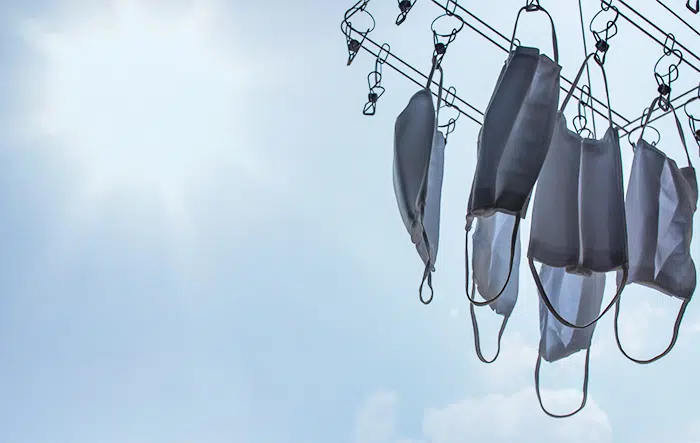
Have you ever noticed that the longer you wear a mask, the harder it is to breathe through it? The effect is minimal for most masks, but for masks with filters, those filters get clogged up over time. The same happens to cloth masks as well, just at a slower pace because there’s more space to fill.
The thing is, while sunlight can break down a virus, it can’t break down a carbon atom or a spot of dirt. Those physical bits of debris slowly build up and clog up your mask. Not to mention they can make it smell bad in a way that sunlight alone isn’t going to purify.
What Should You Do to Sterilize a Mask?
There are a few options you have to sterilize masks.
The first is to simply wash them. Washing masks with soap and water – whether you do it by hand or throw it in a load of laundry – is sufficient to sterilize a mask. The soap is the critical component; water alone won’t do the trick. If you own two or three masks, it’s easy enough to toss them in the laundry at the end of the day, wash them, and use them in a cycle. The trick is to avoid contaminating other surfaces at home in between putting the mask in the laundry and actually running it.
Another option is to set the mask aside for up to 72 hours to let evaporation dry out and kill off the viruses. Some doctors recommend using labeled and dated brown paper bags. Simply place your used mask in such a bag and set it aside where it can’t contaminate other objects or surfaces. The date will tell you when you can open and use the mask again, likely 3-4 days later. If you have a handful of masks you can rotate through; this will work well enough.
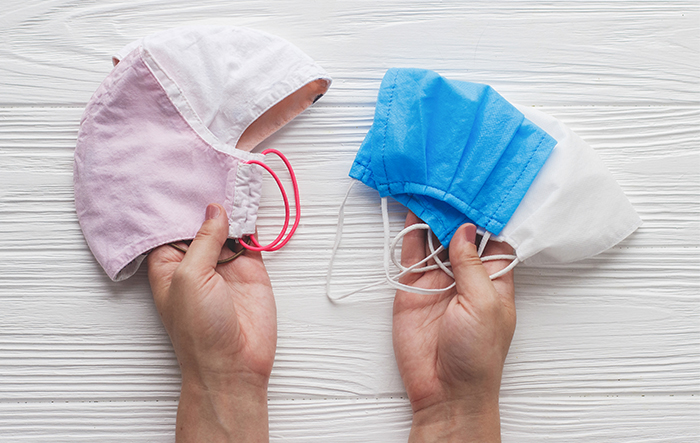
Another option to consider is a basic UV sterilizing system. The problem here is that there are a lot of scams online, and it’s difficult to tell what works. Most of the UV “sterilizing” products you see online use such a low-power UV generating source – like a small LED – that they barely do anything. They’re cheap, sure, but they’re cheap because they’re ineffective.
An actual medical-grade UV sterilizer is a device made to sterilize phones and medical devices in a healthcare setting. It costs 10x as much as the Amazon-based products you see for home use, but it uses actually powerful UV sources to provide real sterilization.
Finally, you can always just buy disposable masks. We don’t recommend this because of the environmental impact of disposable masks, but it’s always an option, especially for people who only need masks a couple of times per week. That said, reusable masks that you can wash in the washing machine are the simplest and most convenient option for most people.
The truth is, leaving a mask alone in a safe space for a few days is all you need to sterilize it, most of the time. You can then wash it occasionally to get rid of dirt and grime, or dispose of it and get a new one, depending on the kind of mask you’re using. It’s not the fastest method, nor the most effective, but it’s good enough for most standard use cases.
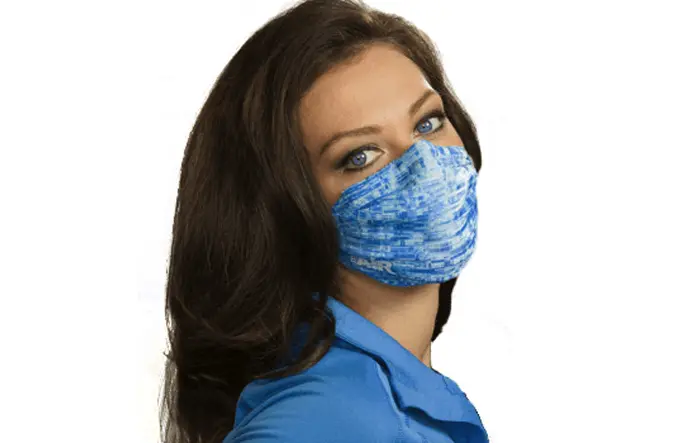
If you’re in search of masks that can be washed and reused indefinitely, along with replaceable filters to give them N95-quality filtration, look no further. Our MyAir masks are proven effective and are well-loved by our customers. They’re easy to wash, easy to wear, and comfortable. What more can you ask for?
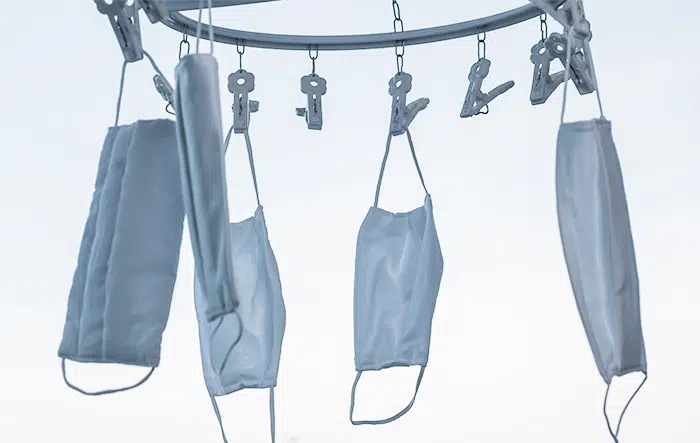
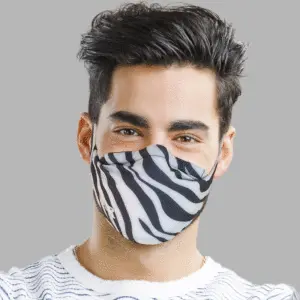
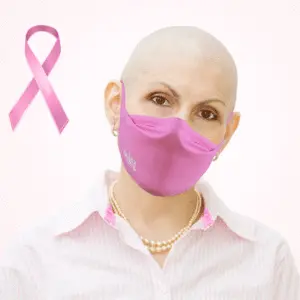

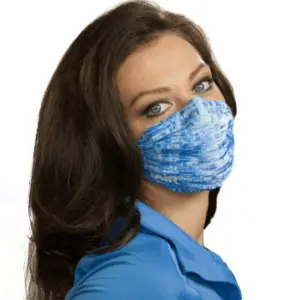
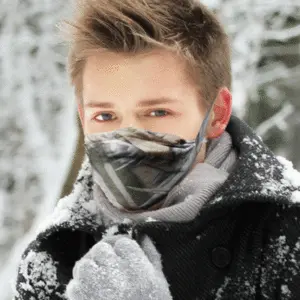
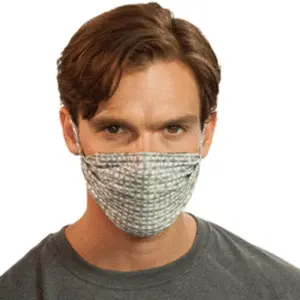
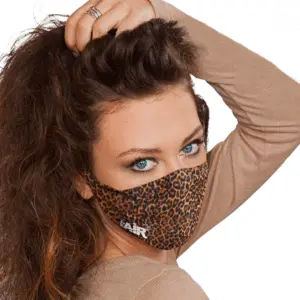
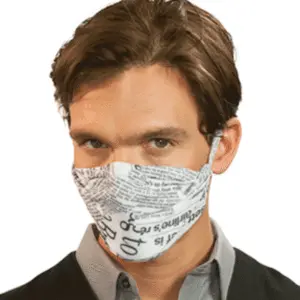



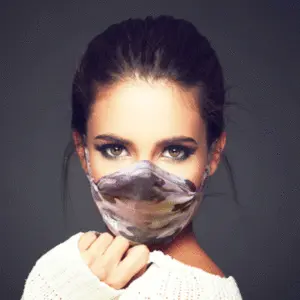
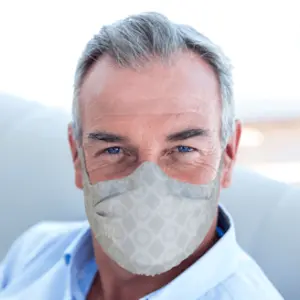
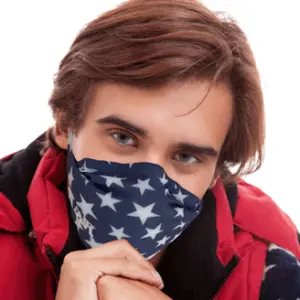

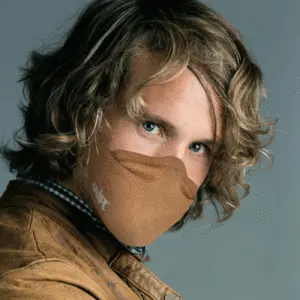

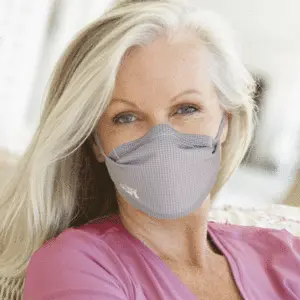
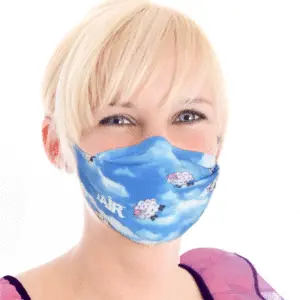
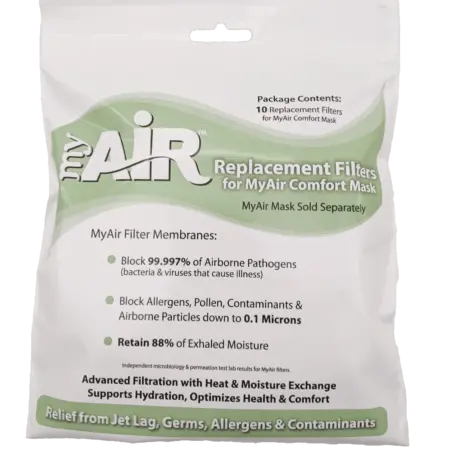
How long can you use a disposable mask?
Disposable masks are intended for single use, up to 8 hours.